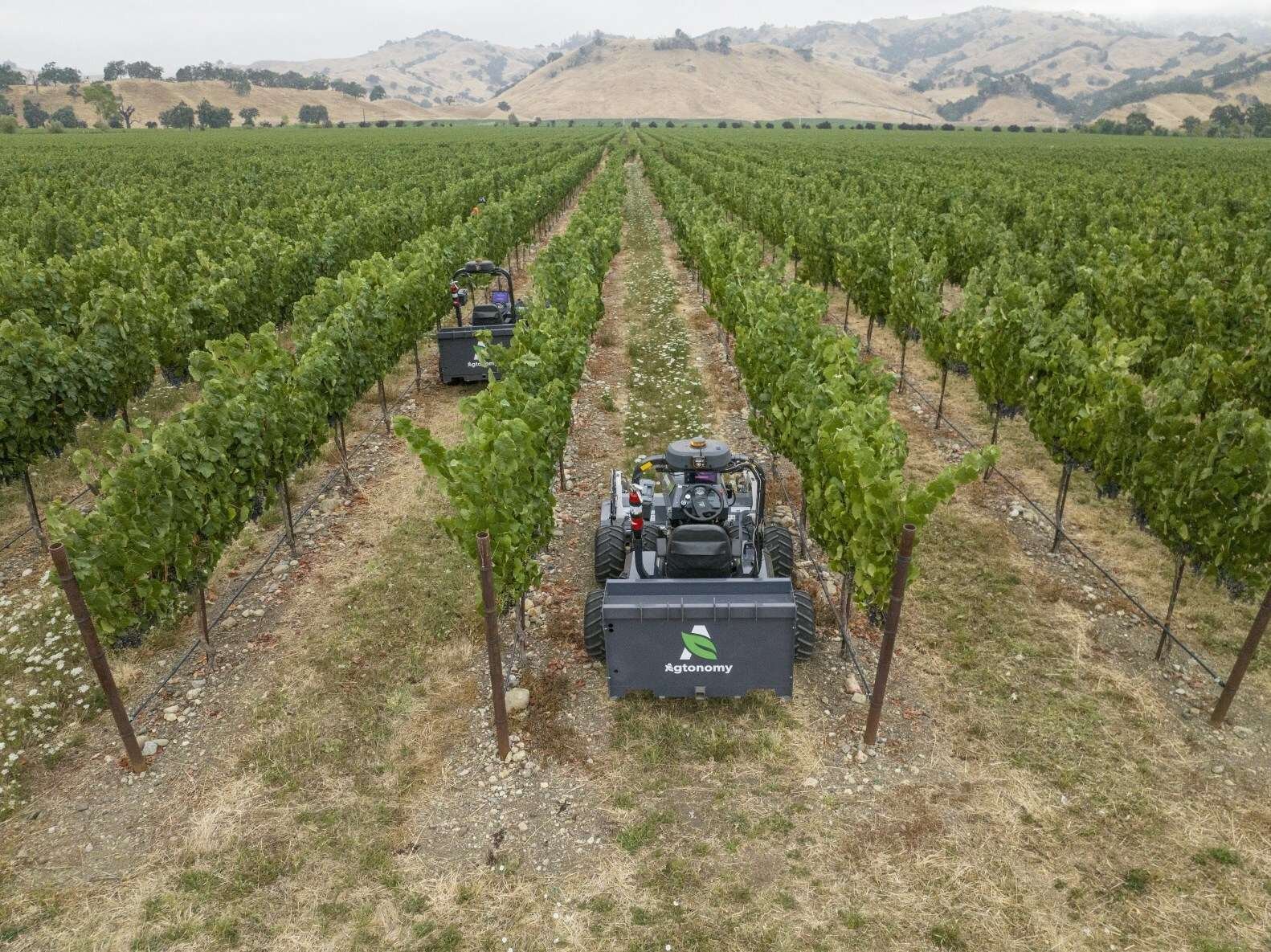Tim Bucher is the cofounder and CEO of Agtonomy, a California-based, software, services and technology company enabling autonomy in agriculture.
The views expressed in this article are the author’s own and do not necessarily represent those of AgFunderNews.
Few industries balance as much tradition and transformation as farming. But rising labor challenges, tight margins, and sustainability pressures make it urgent to get modern tools, like autonomous tractors, into the hands of more growers.
The potential of autonomy in agriculture is clear. What’s less obvious for many is the path to legal operation, especially in California, where agriculture and labor safety regulations are among the most comprehensive in the world. Here, making autonomy a reality for growers requires partnership between technology innovators, equipment manufacturers, growers, and regulators. And the good news is that such a partnership is working.
Evolving safety rules for the autonomous era
California’s foundational ag safety rule—Title 8, Section 3441(b)—was written and approved in 1977, decades before autonomous systems existed.
Its purpose was clear: in an era without rollover protection or modern safety features, too many farmers were injured or killed when working alongside moving equipment. For example, in many scenarios farmers would put the tractor in gear and then jump off to aid in the field work.
The safety rule saved lives, and its spirit lives on today in Cal/OSHA’s “zone of danger” standard: autonomous vehicles can operate legally as long as no workers are in the area.
On the large, isolated acreages we serve, following this rule—backed with clear signage, worker notifications, and remote oversight—has become the norm.
But technology has changed. Today, AI-powered autonomy aims to remove the operator completely from harm’s way, upskilling workers and protecting them from old risks. My own farm experiences—and somber memories of friends lost in rollover accidents—underline why these rules exist, and why autonomous tech is a step forward for safety.

Collaboration is driving progress
Today, regulators aren’t just sitting in meeting rooms; they’re walking the fields with us. On-farm visits let Cal/OSHA teams see how autonomous systems behave, how safety responses trigger in real time, and how growers implement best practices.
These experiences, combined with open advisory discussions, are helping to modernize interpretations of decades-old rules. The outcome is a clear shared mission: safe farm operations, fewer accidents, and the ability for growers to embrace new tools with confidence not only provides extra safety, but also helps keep them in business in today’s challenging markets.
This isn’t an adversarial process, it’s a shared mission. Regulators want what we all want: safe farm operations, reduced accidents, and a thriving agricultural economy. By showing them the technology up close, providing real-world safety data, and collaborating on solutions, we’re making real progress toward updating policies in ways that protect people while keeping the latest innovations in growers’ hands.
For example, Agtonomy’s AI-powered platforms can tell the difference between a safety threat—a person, dog, or large animal—and harmless organic matter like a spider web or tumbleweed. That means fewer unnecessary stops, more uptime, and consistent safety. Built-in daily checks, fault-tolerant sensors, redundant fail-safes, and remote monitoring keep the system accountable, building trust not only with growers but also with regulators.
Other states may have looser rules, but California should lead—not follow—in proving that autonomy and safety can scale together. California’s economy is driven by two things: agriculture and technology. It only makes sense for our state to lead in bringing technology to the crops the entire country and world enjoy from this great state.
By pairing innovation with transparent safety data, collaborative field trials, and regulator involvement from day one, we’re building a model others can follow. Workers stay safe. Growers stay competitive. And California’s leadership in ag technology strengthens its role in feeding the world.
Autonomy’s potential will only be fully realized when innovation and regulation move together. That requires trust, transparency, and a willingness to learn on both sides. Together, we can modernize rules so that they reflect the realities of today’s agriculture and the promise of tomorrow’s.
The post Guest article: Why California’s approach to ag autonomy could set global safety and scalability standards appeared first on AgFunderNews.














